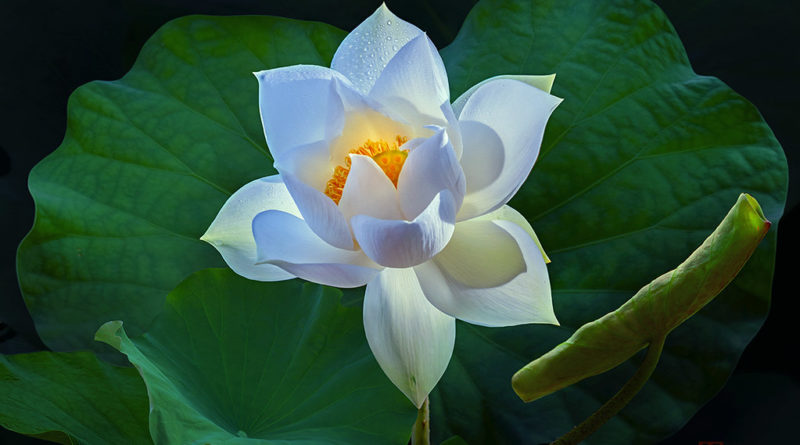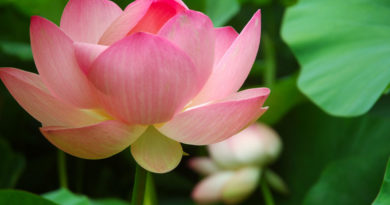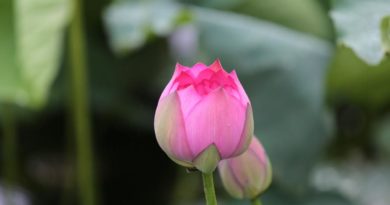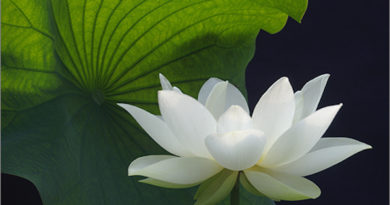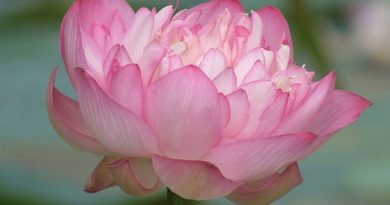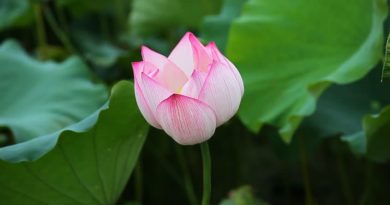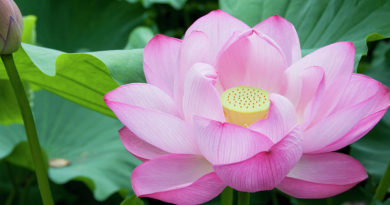Nội Dung Chính
2. VINAYA PIṬAKA
The Vinaya Piṭaka is made up of five books:
(1) Pārājika Pāḷi
(2) Pācittiya Pāḷi
(3) Mahāvagga Pāḷi
(4) Cūḷavagga Pāḷi
(5) Parivāra Pāḷi
1 Pārājika Pāḷi
Pārājika Pāḷi, which is the first book of the Vinaya Piṭaka, gives an elaborate explanation of the important rules of discipline concerning pārājika and saṅghādisesa, as well as aniyata and nissaggiya which are minor offences.
Pārājika Offences and Penalties
Pārājika discipline consists of four sets of rules laid down to prevent four grave offences. Any transgressor of these rules is prohibited from becoming a bhikkhu. In the language of Vinaya the pārājika āpatti falls upon him. He automatically loses the status of a bhikkhu, he is no longer recognized as a member of the community of bhikkhus, and he is not permitted to become a bhikkhu again. He either has to go back to the household life as a layman or return to the status of a sāmaṇera(novice).
One who has lost the status of a bhikkhu for transgression of any of these rules is likened to: (1) a person whose head has been cut off from his body-he cannot become alive even if the head is fixed back on the body; (2) leaves which have fallen off the branches of the tree they will not become green again even if they are attached back to the leaf-stalks; (3) a flat rock which has been split-it cannot be made whole again; (4) a palm tree which has been cut off from its stem-it will never grow again.
The four pārājika offences which lead to loss of status as a bhikkhu are:
(1) The first pārājika: a bhikkhu who indulges in sexual intercourse loses his bhikkhuhood.
(2) The second pārājika: a bhikkhu who takes with intention to steal what is not given loses his bhikkhuhood.
(3) The third pārājika: a bhikkhu who intentionally deprives a human being of life loses his bhikkhuhood.
(4) The fourth pārājika: a bhikkhu who claims to attainments he does not really possess, namely, attainments to jhāna or maggaand phala insight loses his bhikkhuhood.
The pārājika offender is guilty of a very grave transgression. He ceases to be a bhikkhu. His offence (āpatti) is irremediable.
Thirteen Saṅghādisesa Offences and Penalties
Saṅghādisesa discipline consists of a set of thirteen rules which require formal participation of the Sangha from beginning to end in the process of making him free from the guilt of the offence.
(1) A bhikkhu having transgressed these rules, and wishing to be free from his offence must first approach the Sangha and confess to having committed the offence. The Sangha determines his offence and orders him to observe the parivāsa penance, a penalty requiring him to live under suspension from association with the rest of the Sangha for as many days as he has knowingly concealed his offence.
(2) At the end of the parivāsa observance he undergoes a further period of penance (mānatta) for six days to gain approval of the Sangha.
(3) Having carried out the mānatta penance, the bhikkhu requests the Sangha to reinstate him to full association with the rest of the Sangha.
Now being convinced of the purity of his conduct the Sangha lifts the āpatti at a special congregation attended by at least twenty bhikkhus, where ñatti (the motion for his reinstatement) is recited followed by three recitals of kammavācā (procedural text for formal acts of the Sangha).
Some examples of saṅghādisesa offences are:
(1) Kāyasaṃsagga offence: if any bhikkhu with lustful, passionate thoughts engages in bodily contact with a woman, such as holding her hand, caressing her hair or touching any part of her body, he commits the kāyasaṃsagga saṅghādisesa offence.
(2) Sañcaritta offence: if any bhikkhu acts as a go-between for a man and a woman in connection with their lawful living together as husband and wife or their temporary arrangement as man and mistress or woman and lover, he is guilty of sañcaritta saṅghādisesa offence.
Two Aniyata Offences and Penalties
Aniyata means indefinite, uncertain. There are two aniyata offences where it is unclear whether they are a pārājika offence, a saṅghādisesaoffence or a pācittiya offence. This must be determined according to provisions in the following rules:
(1) If a bhikkhu sits down alone with a woman in a place which is secluded and hidden from view and convenient for an immoral purpose and if a trustworthy lay woman (i.e. an ariya) seeing him accuses him of any one of the three offences: (i) a pārājika offence, (ii) a saṅghādisesa offence, (iii) a pācittiya offence, and the bhikkhu himself admits that he was so sitting, he should be found guilty of one of these three offences.
(2) If a bhikkhu sits down alone with a woman in a place which is not hidden from view and not convenient for an immoral purpose but convenient for talking in a lustful manner to her, and if a trustworthy lay woman (i.e. an ariya) seeing him accuses him of any one of the two offences: (i) a saṅghādisesa offence, (ii) a pācittiya offence, and the bhikkhu himself admits that he was so sitting, he should be found guilty of one of these two offences.
Thirty Nissaggiya Pacittiya Offences and Penalties
There are thirty rules under the nissaggiya category of offences and penalties which are laid down to curb greed in bhikkhus for possession of material items such as robes, bowls etc. To give an example, an offence is committed under these rules when objects not permitted are acquired, or when objects are acquired in more than the permitted quantity. The penalty consists firstly of giving up the objects in question. This is followed by confession of the breach of the rule together with an undertaking not to repeat the same offence, to the Sangha as a whole, or to a group of bhikkhus, or to an individual bhikkhu to whom the wrongfully acquired objects have been surrendered.
Some examples of the nissaggiya pācittiya offences are:
(1) First nissaggiya sikkhāpada: if any bhikkhu keeps more than the permitted number of robes (i.e. the lower robe, the upper robe and the great robe) he commits an offence for which he has to surrender the extra robes and confess his offence.
(2) Cīvara acchindana sikkhāpada: if any bhikkhu gives away his own robe to another bhikkhu and afterwards, being angry or displeased, takes it back forcibly or causes it to be taken away by someone else he commits a nissaggiya pācittiya offence.
Nissaggiya offences are light offences compared with the grave offences of pārājika āpatti or saṅghādisesa āpatti.
2 Pācittiya Pāḷi
The Pācittiya Pāḷi, which is the second book of the Vinaya Piṭaka, deals with the remaining sets of rules for the bhikkhus, namely, the pācittiya, the pāṭidesanīya, the sekhiya, the adhikaraṇasamatha and the corresponding disciplinary rules for the bhikkhunis. Although it is called in Pāḷi just pācittiya, it has the distinctive name of suddha pācittiya(ordinary pācittiya), to distinguish it from nissaggiya pācittiya, described above.
Ninety-two Pācittiya Offences and Penalties
There are ninety-two rules under this class of offences classified into nine sections. A few examples of this type of offence are:
(1) Telling a lie deliberately.
(2) A bhikkhu who sleeps under the same roof and within the same walls as a woman commits a pācittiya offence.
(3) A bhikkhu who digs the ground or causes it to be dug commits a pācittiya offence.
A pācittiya offence is remedied merely by admission of the offence to a bhikkhu.
Four Pāṭidesanīya Offences and Penalties
There are four offences under this classification and they all deal with the bhikkhu’s conduct in accepting and eating alms-food offered to him. The bhikkhu breaking any of these rules must use a special formula stating the nature of his fault when admitting his offence.
The first rule of pāṭidesanīya offence reads: “Should a bhikkhu eat hard food or soft food having accepted it with his own hand from a bhikkhuni who is not his relation and who has gone among the houses for alms-food this should be admitted to another bhikkhu by the bhikkhu saying: ‘Friend, I have done a censurable thing which is unbecoming and which should be admitted. I admit having committed a pāṭidesanīyaoffence.’ “
The events that led to the laying down of this rule happened in Sāvatthi, where one morning bhikkhus and bhikkhunis were going for alms-food. A certain bhikkhuni offered the food she had received to a certain bhikkhu who took away all that was in her bowl. The bhikkhuni had to go without any food for the day. Three days in succession she offered to give her alms-food to the same bhikkhu who on all the three days deprived her of her entire food. Consequently she became famished. On the fourth day while going on her alms round she fainted and fell down through weakness. When the Buddha came to hear about this he censured the bhikkhu who was guilty of the wrong deed and laid down the above rule.
Seventy-five Sekhiya Rules of Polite Behaviour
These seventy-five rules laid down originally for the proper behaviour of bhikkhus also apply to novices who seek admission to the order. Most of these rules were laid down at Sāvatthi as a result of undisciplined behaviour by a group of six bhikkhus. The rules can be divided into four groups. The first group of twenty-six rules is concerned with good conduct and behaviour when going into towns and villages. The second group of thirty rules deals with polite manners when accepting alms-food and when eating meals. The third group of sixteen rules contains rules which prohibit teaching of the Dhamma to disrespectful people. The fourth group of three rules relates to unbecoming ways of answering the calls of nature and of spitting.
Seven Ways of Settling Disputes (Adhikaraṇasamatha)
Pācittiya Pāḷi concludes the disciplinary rules for bhikkhus with a chapter on seven ways of settling disputes (adhikaraṇasamatha).
Four kinds of cases are listed:
(1) Vivādādhikaraṇa-disputes as to what is Dhamma, what is not Dhamma; what is Vinaya, what is not Vinaya; what the Buddha said, what the Buddha did not say; what constitutes an offence and what is not an offence.
(2) Anuvādādhikaraṇa-accusations and disputes arising out of them concerning the virtue, practice, views and way of living of a bhikkhu.
(3) Āpattādhikaraṇa-infringement of any disciplinary rule.
(4) Kiccādhikaraṇa-formal meeting or decisions made by the Sangha.
For settlement of disputes that may arise from time to time amongst the order, precise and detailed methods are prescribed under seven headings:
(1) Sammukhā vinaya-before coming to a decision conducting an enquiry in the presence of both parties in accordance with the rules of Vinaya.
(2) Sati vinaya-making a declaration by the Sangha of the innocence of an arahat against whom some allegations have been made after asking him if he remembers having committed the offence.
(3) Amūḷha vinaya-making a declaration by the Sangha when the accused is found to be insane.
(4) Patiññatta karaṇa-making a decision after admission by the party concerned.
(5) Yebhuyyasika kamma-making a decision in accordance with the majority vote.
(6) Tassapāpiyasika kamma-a declaration by the Sangha when the accused proves to be unreliable, making admissions only to retract them, evading questions and telling lies.
(7) Taṇivatthāraka kamma-“The act of covering up the grass”-exonerating all offences except the offences of pārājika, saṅghādisesa and those in connection with laymen and laywomen when the disputing parties are asked to reconcile by the Sangha.
Rules of Discipline for the Bhikkhunis
The concluding chapters in the Pācittiya Pāḷi are devoted to the rules of discipline for the bhikkhunis. The list of rules for the bhikkhunis is longer than that for the bhikkhus. The bhikkhunis rules were drawn up on exactly the same lines as those for the bhikkhus with the exception of the two aniyata rules which are not laid down for the bhikkhuni order.
The eight categories of disciplinary rules for bhikkhus and bhikkhunis of the order are treated in detail in the first two books of the Vinaya Piṭaka. For each rule an historical account is given as to how it came to be laid down followed by an exhortation of the Buddha ending with “This offence does not lead to a rousing of faith in those who are not convinced of the teaching, nor to an increase of faith in those who are convinced.” After the exhortation comes the particular rule laid down by the Buddha followed by word for word commentary on the rule.
Bhikkhu Bhikkhuni
(1) Pārājika 4 8
(2) Saṅghādisesa 13 17
(3) Aniyata 2 0
(4) Nissaggiya pācittiya 30 30
(5) Suddha pācittiya 92 166
(6) Pāṭidesanīya 4 8
(7) Sekhiya 75 75
(8) Adhikaraṇasamatha 7 7
____ ____
227 311
3 Mahāvagga Pāḷi
The next two books, namely, Mahāvagga Pāḷi which is the third book and Cūḷavagga Pāḷi which is the fourth book of the Vinaya Piṭaka, deal with all those matters relating to the Sangha which have not been dealt with in the first two books.
Mahāvagga Pāḷi, made up of ten sections known as khandhakas, opens with an historical account of how the Buddha attained supreme enlightenment at the foot of the Bodhi tree, how he discovered the famous Law of Dependent Origination and how he gave his first sermon to the group of five bhikkhus on the discovery of the Four Noble Truths (i.e. the great “Discourse on the Turning of the Wheel of Dhamma”-Dhammacakkappavattana Sutta). This was followed by another great discourse, the Anattalakkhaṇa Sutta. These two suttas can be described as a compendium of the teaching of the Buddha.
The first section continues to describe how young men of good families like Yasa sought refuge in him as a Buddha and embraced the Dhamma; how the Buddha embarked upon the unique mission of spreading the Dhamma “for the welfare and happiness of the many” when he had collected around him sixty disciples who were well established in the Dhamma and had become arahats; how he began to establish the order of the Sangha to serve as a living example of the truth he preached; and how his famous disciples like Sāriputta, Moggallāna, Mahā Kassapa, Ānanda, Upāli, Aṅgulimāla became members of the order. The same section then deals with the rules for formal admission to the order (upasampadā) giving precise conditions to be fulfilled before any person can gain admission to the order and the procedure to be followed for each admission.
Mahāvagga further deals with procedures for an uposatha meeting, the assembly of the Sangha on every full moon day and on the fourteenth or fifteenth waning day of the lunar month when pāṭimokkha, a summary of the Vinaya rules, is recited. Also there are rules to be observed for rains retreat (vassa) during the rainy season as well as those for the formal ceremony of pavāraṇā concluding the rains retreat, in which a bhikkhu invites criticism from his brethren in respect of what has been seen, heard or suspected about his conduct.
There are also rules concerning sick bhikkhus, the use of leather for footwear and furniture, materials for robes, and those concerning medicine and food. A separate section deals with the kathinaceremonies where annual making and offering of robes take place.
4 Cūḷavagga Pāḷi
Cūḷavagga Pāḷi, which is book four of the Vinaya Piṭaka, deals with further rules and procedures for institutional acts or functions known as saṅghakamma. The twelve sections in this book deal with rules for offences such as saṅghādisesa that come before the Sangha; rules for observance of penances such as parivāsa and mānatta and rules for reinstatement of a bhikkhu. There are also miscellaneous rules concerning bathing, dress, dwellings and furniture and those dealing with treatment of visiting bhikkhus, and duties of tutors and novices. Some of the important enactments are concerned with tajjanīya kamma, a formal act of censure by the Sangha taken against those bhikkhus who cause strife, quarrels and disputes, who associate familiarly with lay people and who speak against the Buddha, the Dhamma and the Sangha; ukkhepanīya kamma, the formal act of suspension to be taken against those who, having committed an offence, do not want to admit it; and pakāsanīya kamma, taken against Devadatta announcing publicly that “Whatever Devadatta does by deed or word, should be seen as Devadatta’s own and has nothing to do with the Buddha, the Dhamma and the Sangha.” The account of this action is followed by the story of Devadatta’s three attempts on the life of the Buddha and the schism caused by Devadatta among the Sangha.
In section ten there is the story of how Mahāpajāpatī, the Buddha’s foster mother, requested admission into the order, how the Buddha refused permission at first, and how he finally agreed to the request because of Ānanda’s appeal on her behalf.
The last two sections describe two important events of historical interest: the holding of the first Synod at Rājagaha and of the second Synod at Vesāli.
5 Parivāra Pāḷi
Parivāra Pāḷi, which is the fifth and last book of the Vinaya Piṭaka, serves as a kind of manual. It is compiled in the form of a catechism, enabling the reader to make an analytical survey of the Vinaya Piṭaka. All the rules, official acts, and other matters of the Vinaya are classified under separate categories according to the subjects dealt with.
Parivāra explains how rules of the order are drawn up to regulate the conduct of the bhikkhus as well as the administrative affairs of the order. Precise procedures are laid down for the settling of disputes and the handling of matters of jurisprudence, for the formation of Sangha courts and the appointment of well-qualified Sangha judges. It lays down how the Sangha Vinicchaya Committee, the Sangha court, is to be constituted with a body of learned vinayadharas (experts in Vinaya rules) to hear and decide all kinds of monastic disputes.
The Parīvara Pāḷi provides general principles and guidance in the spirit of which all the Sangha Vinicchaya proceedings are to be conducted for the settlement of monastic disputes.
———
Copyright Vipassana Research Institute – Source: https://www.tipitaka.org/eot#4
TẢI MOBILE APP PHẬT GIÁO THERAVĀDA ĐỂ XEM THÊM NHIỀU THÔNG TIN HỮU ÍCH (ANDROID & IOS)

